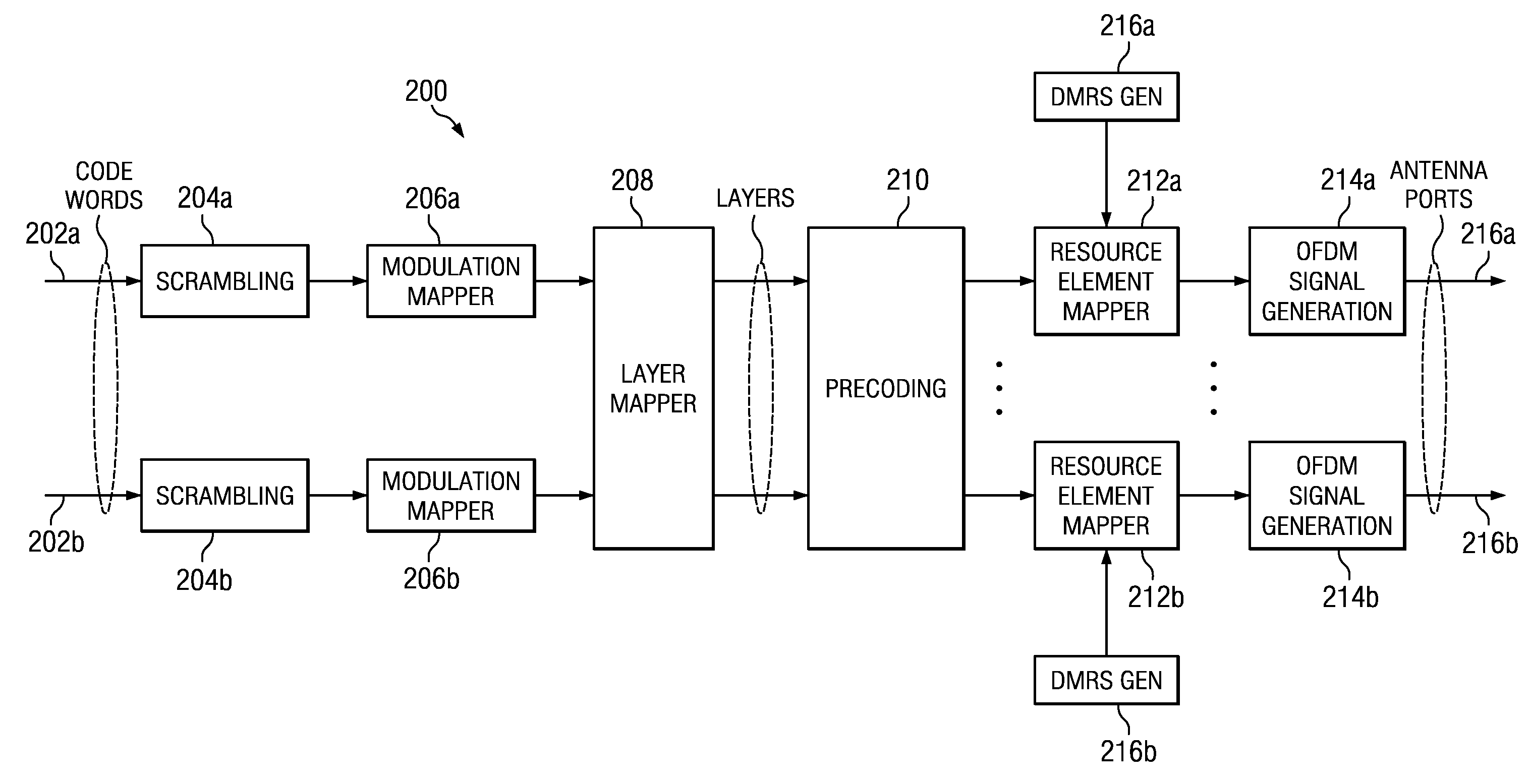Reference Signal Resource Allocation for Single User MIMO
a signal resource and reference signal technology, applied in the field of wireless cellular communication, can solve the problems of layer erroneous detection, uncorrelated transceivers, and interference of signals corresponding to the two layers
- Summary
- Abstract
- Description
- Claims
- Application Information
AI Technical Summary
Problems solved by technology
Method used
Image
Examples
Embodiment Construction
[0030]In order to enable SU-MIMO transmission, in some embodiments of the invention, a UE can be assigned more than one (e.g. a group) of DMRS resources. In some embodiments, a DMRS resource is obtained from a cyclic shift of a base signal. The number of cyclic shifts used is signaled to the UE. In some embodiments of the invention, a UE uses a group of evenly spaced cyclic shifts. In some embodiments of the invention, a NodeB signals only one cyclic shift to the UE and the remaining cyclic shifts are computed at the UE using the single signaled cyclic shift. In other embodiments, all cyclic shifts which are assigned to the UE are signaled explicitly in the downlink signaling. Thus, in some embodiments of the invention, reference signal resources are cyclic shifts.
[0031]In some embodiments of the invention, the DMRS is pre-coded by one pre-coder and data transmission is pre-coded by another pre-coder. In some embodiments of the invention, both pre-coders are the same. In some embodi...
PUM
 Login to View More
Login to View More Abstract
Description
Claims
Application Information
 Login to View More
Login to View More - R&D
- Intellectual Property
- Life Sciences
- Materials
- Tech Scout
- Unparalleled Data Quality
- Higher Quality Content
- 60% Fewer Hallucinations
Browse by: Latest US Patents, China's latest patents, Technical Efficacy Thesaurus, Application Domain, Technology Topic, Popular Technical Reports.
© 2025 PatSnap. All rights reserved.Legal|Privacy policy|Modern Slavery Act Transparency Statement|Sitemap|About US| Contact US: help@patsnap.com



